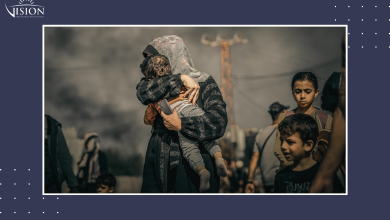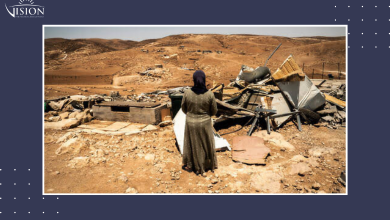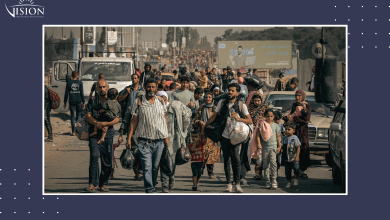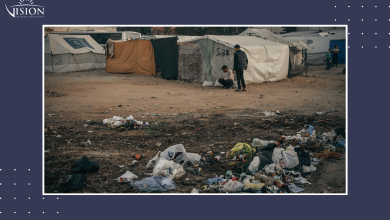Summary of Settler and Occupation Forces Violations: August 2025 Report
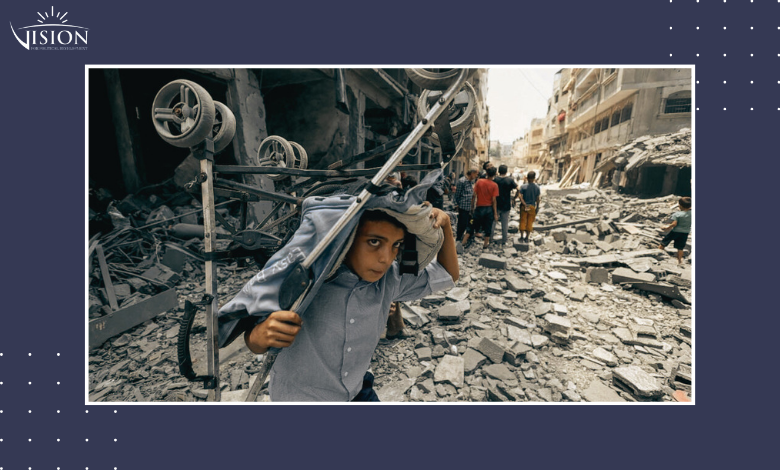
The following summary reviews the most notable attacks and violations committed by the occupation army and its settlers against Palestinian citizens and their land, during the month of August 2025. This report relies on insights and information drawn from the United Nations Office for the Coordination of Humanitarian Affairs (OCHA), the Wall and Settlement Resistance Authority, and Peace Now.
Throughout the month of August, Israeli forces have continued bombing tents, schools, residential buildings and towers, as well as health facilities across the Gaza Strip. As a result, the death toll since October 7, 2023, until the end of this month has risen to 63,746 martyrs, with 161,245 others injured.
Since the imposition of the military-controlled distribution system on May 27 of this year, occupation forces have carried out systematic crimes that led to the killing of 2,339 starving civilians by live fire, and the wounding of more than 17,070 others while they attempted to obtain food. Among the victims, 1,135 were killed near distribution centers, while 1,011 were executed on the routes of aid trucks; a flagrant violation of international humanitarian law and a clear criminalization of the use of starvation as a weapon against civilians.
The number of martyred journalists has also risen to 247 since the beginning of the genocidal war on the Gaza Strip.
Ground military operations continue at an intense pace in Gaza City, particularly in the city center, as well as in Jabalia and the surrounding northern areas; triggering new waves of displacement. Field reports indicate that some families were forced to flee towards the northwestern coastal areas near the Zikim crossing, despite these areas being under evacuation orders, due to the severe overcrowding of tents along Gaza’s beaches. Overall, more than 856,000 cases of displacement have been recorded across the Strip since the renewed escalation on March 18.
Amid this ongoing displacement, most residents of Gaza receive less than the minimum emergency water standard of 15 liters per person per day. This shortage stems from limited fuel supplies to operate water and sanitation facilities, the destruction of infrastructure or lack of access to it, as well as the inability to carry out essential repairs.
Gaza Governorate is already facing severe famine, which is projected to spread to Deir al-Balah and Khan Younis by the end of September 2025. The UN Secretary-General stressed that what is unfolding is not merely a food crisis but a deliberate collapse of the fundamental systems necessary for human survival, where civilians are starving and children are dying amid ongoing inaction. He held Israel, as the occupying power, legally and morally responsible under international law for ensuring the continuous and adequate provision of food, medicine, and other essentials necessary for the survival and dignity of the civilian population in Gaza.
Gaza is facing a humanitarian catastrophe marked by the widespread prevalence of malnutrition among children. The Nutrition Cluster confirms that all children under the age of five—around 320,000 in total—are now directly at risk of acute malnutrition. Since January 2025, nearly 44,000 children have been admitted to health centers for treatment of acute malnutrition, including more than 8,000 children in critical condition suffering from severe acute malnutrition. While these figures point to a daily tragedy, 367 deaths due to malnutrition have been documented between October 2023 and early September 2025, including 131 children. Data from the Ministry of Health reveals an alarming escalation in these deaths; from 4 in 2023, rising to 49 in 2024, and surging to 260 deaths since the beginning of 2025 up to August 27 alone.
The ongoing genocide has also deprived more than 700,000 children in Gaza of their fundamental right to education, including nearly 658,000 who have already lost two consecutive school years. With the start of the new academic year this month, Gaza’s children are entering their third year in a row without access to schools, a blatant violation of children’s rights with devastating long-term consequences for an entire generation. Approximately 700,000 students were meant to begin the school year, including 56,000 six-year-olds who should have been starting school for the very first time; yet prevailing conditions have denied them this opportunity.
It is estimated that more than 86% of Gaza’s territory is either under direct Israeli military control or within areas subject to evacuation orders, rendering the continuation of education nearly impossible. At the same time, direct attacks on educational institutions and infrastructure persist, including airstrikes targeting schools used to shelter displaced families. The Education Cluster has documented 394 attacks on educational infrastructure since October 2023, with 117 incidents occurring between January and August 2025 alone.
Key Statistics on Violations in the West Bank and Jerusalem
Military operations by Israeli forces continue in the northern West Bank. At the end of August, the occupation authorities declared a new military zone encompassing parts of Tulkarm and Nur Shams refugee camps, as well as adjacent neighborhoods. This was followed by evacuation orders for 15 homes north of Tulkarm Camp and 21 homes in Jabal al-Nasr neighbourhood in Nur Shams Camp, displacing families for the second time, only a month after they had been allowed to return.
In parallel, settler violence and repeated attacks remain a widespread and systematic threat across West Bank governorates. In one incident, three Palestinian families (17 individuals) from a Bedouin community east of al-Taybeh, in Ramallah and al-Bireh governorate, were forcibly displaced following a series of settler assaults that began on 3 June 2024, after the establishment of a new settlement outpost nearby. This comes in addition to six families from the same community who had been previously displaced in October 2023 due to settler violence.
These practices ranging from forced displacement, land confiscation, and the expansion of settlement outposts, to escalating settler violence; have created a pervasive climate of insecurity and daily precarity for Palestinians across the West Bank. The absence of meaningful international accountability continues to exacerbate the vulnerability of Palestinian communities and to entrench a cycle of displacement and dispossession.
Israeli Stranglehold of Palestinian Land and Natural Resources
As part of Israel’s ongoing efforts to assert control over vast areas of Palestinian land and natural resources while denying Palestinians the right to use or benefit from them, settlers carried out two incidents of sabotage against water infrastructure during this month, cutting off supplies to 100,000 Palestinians across 20 villages.
- On 28 August, settlers raided the Ein Samia spring area northeast of Ramallah, dismantling pumps and mechanical systems, destroying surveillance cameras, and stealing equipment belonging to the Jerusalem Water Authority. They also vandalized a maintenance team’s vehicle as staff attempted to repair the damage.
- On 31 August, settlers destroyed water well pumps and damaged the supply network, further disrupting access.
Military orders remain a primary tool of Israeli control over Palestinian land and natural resources, especially water. According to data from the Applied Research Institute – Jerusalem (ARIJ), between 2019 and July 2025, Israeli authorities issued 108 military orders targeting the water sector and its related infrastructure. These orders were concentrated primarily in the governorates of Ramallah and al-Bireh, followed by Jericho, Jerusalem, Nablus, and Bethlehem.
Israel currently controls approximately 85% of Palestinian groundwater resources, restricting Palestinian access. As a result, the average daily water consumption for a Palestinian in the West Bank is only 89 liters, compared to 247 liters per day for an Israeli settler living in the same territory. This figure is also higher than the European average of 144 liters per person per day (2018).
The water crisis in the West Bank is further exacerbated by Israeli land appropriation under various designations, including:
- “Firing zones” and “nature reserves” covering 705 km² (12.5% of the West Bank)
- “State land” covering 545 km² (9.6%)
- “Closed military areas” covering 1,008 km² (18%)
These classifications, alongside other pretexts, serve to consolidate Israeli control over large swathes of Palestinian territory, deepening both the land and water crises.
Casualties and Injuries
During this month, seven Palestinians were killed, with Jenin and Nablus governorates recording the highest number of fatalities. The victims included one Palestinian executed in an Israeli targeted assassination, another killed during a military raid, and two others shot dead by settlers. In addition, 118 Palestinians were injured, including nine children, four women, and one person with disabilities.
Since January 2025, more than 2,780 Palestinians have been injured by Israeli forces and settlers across the West Bank, including 122 women and 541 children. Of these, 500 injuries were inflicted by settlers, marking a 39% increase in settler-related injuries compared to the same period in 2024.
Arrests
During August 2025, Israeli forces arrested 665 Palestinians, including 12 children, 13 women, 3 journalists, 2 university students, and persons with disabilities. Arrests were concentrated in Hebron Governorate with 129 cases, followed by Ramallah with 104 cases, while the remaining arrests were distributed across Jerusalem, Bethlehem, Jericho, Salfit, Nablus, Qalqilya, Tulkarm, Tubas, and Jenin.
According to data provided by the Israel Prison Service to the human rights organization “Hamoked”, as of early September 2025, 11,040 Palestinians were detained in Israeli prisons. Of these:
- 1,540 were sentenced prisoners
- 3,351 were held in pre-trial detention
- 3,577 were held under administrative detention without trial
- 2,662 were classified as “illegal combatants”
These figures do not include Palestinians arrested by the Israeli military from the Gaza Strip since 7 October 2023.
Demolition of Homes and Structures
Since 1 August 2025, Israeli forces have demolished 125 Palestinian homes and structures across the West Bank, with the majority of structures destroyed in Tubas Governorate and the highest number of homes demolished in Jerusalem. This represents a slight increase compared to 122 homes and structures demolished in July 2025. In addition, 21 Palestinian structures were issued demolition or stop-work orders, citing lack of permits, with most notifications issued in Jerusalem (10), followed by Bethlehem (5).
The occupation authorities cite lack of permits as the primary justification for demolitions. However, Israel deliberately refuses to approve master plans for Palestinian communities in Area “C”, forcing Palestinians to build without permits in order to accommodate population growth or migration toward Areas “A” and “B,” which constitute 36% of the West Bank’s territory and contain 86% of the West Bank’s population.
Between January and September, the occupation authorities demolished 1,151 structures across the West Bank on the grounds that they were unlicensed. The demolitions included 274 inhabited homes, 60 uninhabited residential structures, 607 agricultural structures, 138 water and sanitation structures, and 70 other structures. 85% of these structures were located in Area C, 14% in Jerusalem, and 1% in Areas A and B. These figures represent a 44% increase in the number of demolished buildings compared to 2024. The demolitions resulted in the displacement of 1,300 Palestinians, a 31% increase in the number of displaced persons during 2024.
The last ten years have seen the demolition of some 7,000 Palestinian homes and structures as part of a colonial strategy based on depopulation and annexation in Area C, which constitutes 61% of the total area of the West Bank. During 2025, the pace of demolitions has escalated significantly, with 1,099 residential, agricultural, and commercial structures destroyed across the West Bank so far.
Land Confiscation and Demolition
During the period covered by this report, Israeli authorities seized 45 dunams of Palestinian land through four military takeover orders, as follows:
- 8.298 dunams in Tammoun, Tubas, for the establishment of a new Israeli military post.
- 4.727 dunams in Deir Istiya, Salfit, for the construction of a settler road linking the settlement of “Amno’el” to another settler route.
- 11.562 dunams in Deir Istiya, Salfit, for a settler road connecting the settlements of “Yakir” and “Karni Shomron.”
- 20.312 dunams in Deir Ballut and Kafr ad-Dik, Salfit, for the creation of a buffer zone around the settlement of “Eli Zehav.”
In the past three months alone, the Israeli military confiscated more than 23,100 dunams of Palestinian land in Qalqilya and Nablus governorates.
Israeli forces also bulldozed tens of dunams of private Palestinian land across the West Bank. Additionally, soldiers and settlers uprooted approximately 11,700 trees, including 11,599 olive trees in Hebron, Salfit, Ramallah, Bethlehem, Jenin, and Nablus.
Settler Attacks and Raids:
Settlers continue to impose a new colonial reality on Palestinian land through a series of repeated attacks under the full cover of the occupation army. These attacks are not limited to burning trees, but extend to assaulting citizens, stealing and vandalizing property, damaging homes and facilities, and even attacks that have claimed the lives of Palestinian citizens. These violations represent a systematic policy of violence aimed at displacing Palestinians from their land and emptying areas of their original inhabitants, paving the way for the expansion of illegal settlements and outposts and control of land to serve the settlement project.
During this month, 308 cases of attacks by settlers on Palestinian citizens and their property were recorded, including raiding and cultivating agricultural land to take control of it, destroying Palestinian crops and trees, systematic attacks on Palestinian villages and towns, shooting at houses, burning vehicles, and stealing and confiscating citizens’ property.
Reports indicate that settler groups targeted 38 bedouin communities whose residents were completely displaced since the start of the genocidal onslaught on Gaza in October 2023. These communities were mainly concentrated in the governorates of Ramallah and Hebron, in addition to a number of other communities that were targeted and some of whose families were displaced.
Settlement Activity
During August 2025, Israeli authorities reviewed 31 master plans aimed at expanding settlements in the West Bank and Jerusalem. Of these, 16 plans were approved, while 15 were filed for consideration, collectively targeting 2,604 dunams of Palestinian land.
On 10 August 2025, the Israeli Civil Administration issued a booklet of military orders classifying 63 sites in the West Bank as “Israeli historical and archaeological sites”, including 59 in Nablus Governorate, 3 in Ramallah, and 1 in Salfit. This action is part of a broader Israeli policy; previously, over 2,400 Palestinian archaeological sites in the West Bank had been classified as “Israeli sites,” under the pretext of preservation and maintenance. In practice, these classifications are used to control large areas of Palestinian land, as many sites are later converted into settlements, outposts, military zones, or recreational sites exclusively for settlers, reflecting a colonial approach aimed at land appropriation and erasing Palestinian place identity.
Subsequently, the Israeli Ministry of Housing announced six tenders for the construction of 4,030 new housing units in West Bank settlements. In the settlement of Ariel, 730 units were allocated for the so-called “Western Ariel Neighborhood,” effectively isolating the Palestinian city of Salfit and restricting its expansion. In Ma’ale Adumim, tenders were issued for 3,300 new housing units, representing an approximately 33% increase in the settlement’s residential units.
New Settlement Outposts
During the period covered by this report, settlers established a new outpost in the Tel Rumeida neighbourhood of Hebron by placing two caravans on a plot of land located west of the Jewish cemetery, between a mosque and a girls’ secondary school. This land had no prior settlement presence and, according to the 1997 Hebron Agreement map, falls within Area H1 under full Palestinian control, where Israeli access is prohibited by military orders issued by the occupation army.
This development followed the seizure of the Tamimi family home in March 2025, which settlers converted into an outpost named “Gaon Yehuda.” The new outpost is completely isolated from other Tel Rumeida settlements, imposing strict security arrangements that directly impact the daily lives of Palestinian residents, particularly school students and mosque worshippers, after the school entrance and one mosque door were closed due to the placement of caravans.
On 20 August 2025, the Higher Planning Council of the Israeli Civil Administration held a session to discuss plans for 3,753 new housing units in the West Bank. The majority of these units (3,401) are concentrated in the E1 area adjacent to Ma’ale Adumim, while an additional 342 units are planned for the Assayel settlement, which was legalized in February 2023.
By the end of the month, settlers also established a new outpost in the lands of the Bedouin village of Umm al-Khair, south of Hebron, placing four caravans just meters from residents’ homes and preparing the site for additional caravans.
Since 1967, Israeli authorities have refused to recognize Umm al-Khair and denied its residents building permits, leaving all homes and structures at risk of demolition. Over the past 15 years, 56 structures have been demolished in Umm al-Khair, including 14 structures in the last year and a half alone. Since October 2023, settlers have established approximately 70 new outposts across the West Bank, under political and security cover provided by the Israeli government.
These developments reflect a sustained pattern of settlement expansion, land appropriation, and displacement; aggravating both the humanitarian crises situation and the infringement of Palestinian rights across the West Bank.
Key Insights & Statistics – August 2025
Gaza Strip
- Casualties: 63,746 killed; 161,245 injured since 7 Oct 2023.
- Journalists Killed: 247.
- Displacement: 856,000+ displaced since 18 Mar 2025.
- Water access: Most residents receive <15 liters/person/day.
- Famine: Severe, projected to spread to Deir al-Balah & Khan Younis by Sep 2025.
- Child Malnutrition: 320,000 under 5 yrs of age, at risk; 44,000 treated since Jan 2025; 367 deaths documented.
- Disruption of Education: 700,000 children deprived of schooling; third consecutive year lost.
- Attacks on Educational Institutions: 394 incidents since Oct 2023; 117 between Jan–Aug 2025.
West Bank & Jerusalem
- Casualties: 7 killed in August; 2,780+ injured since Jan 2025 (39% increase in settler-inflicted injuries).
- Arrests: 665 in August; 11,040 Palestinians held in Israeli prisons (Sep 2025).
- Home Demolitions: 125 in August; 1,151 Jan–Sep 2025; 7,000 over last 10 years.
- Displacement: 1,300 Palestinians displaced Jan–Sep 2025 (31% increase from 2024).
- Land Confiscation: 45 dunams seized via 4 military orders; 23,100 dunams confiscated in Qalqilya & Nablus over 3 months.
- Tree Uprooting: 11,700 trees destroyed, including 11,599 olive trees.
- Settler Attacks: 308 incidents recorded in August; 38 Bedouin communities affected.
- Settlement Expansion: 31 master plans reviewed; 16 approved; 4,030 new housing units announced; E1 area: 3,401 units; Assayel: 342 units.
- New Outposts: Tel Rumeida (Hebron) and Umm al-Khair (south Hebron) established; 70 outposts created since Oct 2023.
Overall:
- Trend: Systematic settlement expansion, land appropriation, and forced displacement; exacerbating humanitarian crisis and violations of Palestinian rights across Gaza and the West Bank.


